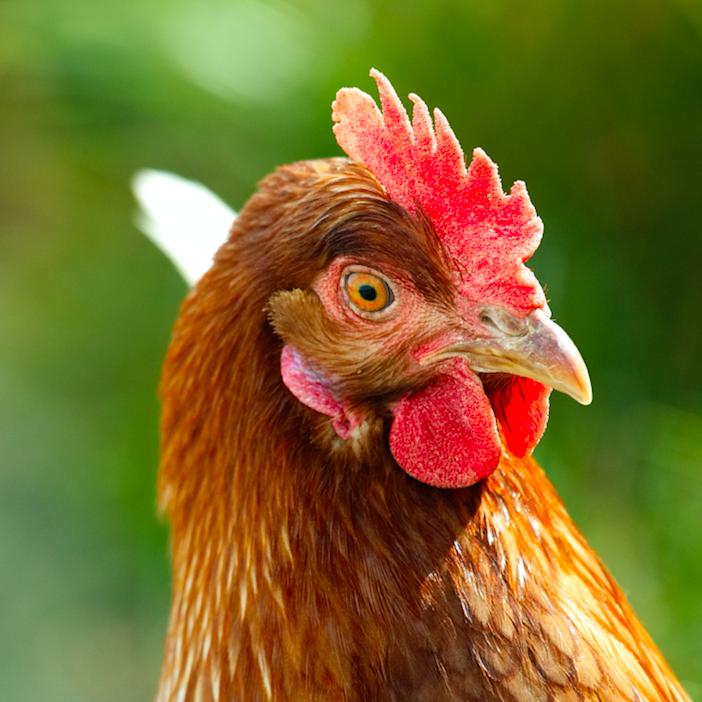Now Is the Time To Address Climate Change, Says This Executive


Los Angeles has the most installed solar capacity of any U.S. city, thanks in part to this massive solar installation atop the LA Convention Center, managed by AEG.
This article series is sponsored by AEG and produced by the TriplePundit editorial team.
The gravity of moments can be hard to judge during their passing, but there is no denying the significant impact that the courageous teenage climate activist, Greta Thunburg, has already had on the world. Her Global Climate Strikes movement serves as a bookend for today’s U.N. Climate Action Summit and the beginning of Climate Week NYC 2019.
Will this be the week that future generations will look back on and point to as the time when humanity started making meaningful progress to address the global climate crisis? We certainly hope so. There’s simply no time to waste.
A little less than a year ago, the United Nations’ Intergovernmental Panel on Climate Change (IPCC) issued its Global Warming of 1.5˚C special report. The report addresses the impacts of 1.5 degrees Celsius in global temperature rise, compared to a 2-degree scenario.
According to the IPCC report, human activities have already caused approximately 1 degree of global warming above pre-industrial levels. As a result, we have already seen a certain amount of damage to our environment, infrastructure, and health and safety. This damage will only increase if warming continues to 1.5 degrees or higher. For example, extreme heat events are expected to be 2.6 times more severe under the 2-degree scenario than at 1.5 degrees. Higher levels of warming, expected if business-as-usual conditions persist, could lead to disastrous or catastrophic consequences.
We saw the IPCC’s report as a solemn warning and a clear roadmap for the future. AEG was one of the first companies to adopt a science-based target for greenhouse gas emissions reductions based on the report. Per its guidance, AEG is committed to reducing our overall carbon footprint by 45 percent from 2010 to 2030, and to achieve carbon neutrality by 2050. As noted in our most recent sustainability report, we have made significant progress in reducing our GHG emissions, and in 2018 we were just 4 percent above our emissions goal for that year.
Although we are confident we can meet and exceed our targets for GHG reductions, our footprint is a relatively tiny piece of a much larger inventory of global emissions. So even if we do our part, our fate—and the fate of all humanity—depends on the ability of the global community to achieve the reductions recommended by the IPCC, which notes that achieving the level of carbon reduction to arrest global warming at 1.5 degrees would require “unprecedented” changes in our economies, lifestyles and habits.
We recognize that appreciation of this situation can overwhelm and paralyze, preventing individuals and organizations from taking action. What if our actions don’t make a difference? Has the die already been cast? Shouldn’t we just start preparing for the worst?
The answer is that our actions do make a difference. Every amount of avoided emissions will mitigate the future impacts of climate change and will save lives. Our fate is not sealed, and we can avoid the worst. But we have to act now, take whatever actions we can for those emissions within our control, and, crucially, we have to influence others—our partners, neighbors, even rivals—to do the same.
How does a company like AEG do such a thing? For one, our events reach over 100 million fans a year, giving us a unique opportunity to influence GHG emissions far beyond our direct footprint. That is why we are redoubling our efforts to leverage our visibility and communications platforms to sound the alarm and join the global dialogue.
AEG is a founding partner of the Green Sports Alliance, a coalition of sports organizations dedicated to using the power of sports to help protect the environment. Our premier sports franchises, the LA Kings and LA Galaxy, have their own branded sustainability programs that help those teams engage with their fans about environmental sustainability.
And in May 2019, AEG announced that six of its sports organizations, the LA Kings, Berlin Eisbären, Ontario Reign, LA Galaxy, Amgen Tour of California and AEG Rugby, became the first in their respective leagues to join the U.N. Sports for Climate Action Framework, a worldwide initiative and a new movement dedicated to collective action on climate change. Our live music division, AEG Presents, just joined the Music Declares Emergency, a group of artists, music industry professionals, and organizations that stand together to declare a climate emergency. And AEG will work with its fellow winners of the inaugural Beyond Sport Collective Impact Award to drive impact for climate action.
As we must, we will continue our efforts to fully eliminate the carbon emissions associated with our operations and to support our communities and partners who are on the same journey. Global climate change is a serious, potentially catastrophic crisis that impacts us all, and we all have a responsibility to join the fight. The time is now.
Image courtesy of AEG via the 3BL Media newsroom
Salesforce Launches Yesteryear’s Climate Action Tool


There was plenty of climate related news last week besides the Global Climate Strike (shown above in Augsberg, Germany and discussed here). Last week, Salesforce introduced its Sustainability Cloud with an aim to “empower every business to drive impactful climate action.”
The platform has a nifty Salesforce look and feel, allowing clients to track, analyze and report reliable greenhouse gas data that offer efficiency and insights to managers and create dynamo reports and dashboards to catch the eye of the c-suite. The move is precipitated both by Salesforce’s headline sponsorship of Climate Week in New York next week, and, according to the company’s sustainability vice president Patrick Flynn, by its involvement in the Task Force on Climate-Related Financial Disclosure (TCFD).
But as we know, TCFD is focused on the financial impact of climate-related risks and opportunities on an organization, rather than the impact of an organization on the environment. In other words, TCFD is reflecting that businesses and stakeholders recognize the urgent issues of climate change more than ever including the risks that climate change is creating for their growth. In other words, corporations are worried about the physical impacts - both shocks and stresses - of climate change. This is an area that the Salesforce Cloud does not touch.
While I can think of dozens of carbon accounting platforms, for an industry that is old and acquisition-rich by Silicon Valley standards (check Hara, for instance, which more than a decade ago had become industry leading enough to be acquired by Verisae, which was subsequently acquired by Accruent), the resilience analytics marketplace is not so crowded and is ripe for a new entrant like Salesforce.
A day before Salesforce’s Sustainability Cloud launch, the Climate Bonds Initiative released its Climate Resilience Principles that provide a framework for assessing climate resilience investments. Created with input from over 40 experts around the globe, the principles first aim to guide investors to understand climate risks faced by assets, activities and systems. Second, they address these risks through risk-reduction measures and third to increase the number and quality of investments that deliver resilience benefits over and above addressing identified risks.
These principles are solution to the urgent issue of climate impacts on business operations and growth. Moving beyond carbon accounting, one thing the principles rely on: the nascent risk and resilience metrics arena that Salesforce could capture and grow.
I have no doubt that Salesforce will be a force for good. With close to two hundred thousand clients, they are certain to make it easier for many more corporations to measure their carbon emissions. This captive market may be Salesforce’s disruption of the relatively mature carbon accounting marketplace.
But the real white space is for easily accessed and applied data that can help corporations assess and act on their current and future climate change hazards and vulnerabilities. Let’s hope the swift work of Salesforce’s epic workforce will not be disrupted by climate risks, such as San Francisco’s wildfire-driven poor air quality, increasing National Weather Service heat-related danger days or more frequently flooded commutes - to move ahead toward that truly newsworthy task.
Image credit: Wiki Commons
3p Friday: The Sustainability Conferences on Our Radar for Fall 2019


There are several reasons why within the corporate sustainability world, conference season gets heaviest in the fall—starting with the fact that flights are usually reasonable, as many people are saving their airline miles and travel budgets for the Thanksgiving, Christmas and late December holidays. From San Diego to Philly, there is a long list of events that can help make your job easier, jolt your staff with new perspectives, and provide fantastic networking opportunities, which is invaluable for those toiling in this space.
Of course, our own top choice is 3BL Forum, which the team here at TriplePundit and across the 3BL Media family has been organizing and curating over the past three years. This year’s Forum, October 29-30 in National Harbor, Maryland, (a short hop from Washington, D.C.), focuses on what’s around the corner in the world of corporate responsibility. We don’t just go on stage and tell you what we’re doing—we dive into the how and why, what’s hard and, this year, what’s next.
We’re proud that we plan on having about 90 leaders onstage across two days—and these sessions are short, snappy, to the point and promise to be impactful. We’re also thrilled that, at last count, about 55 percent of our speakers are women.
So check your calendar, save October 29-30 for 3BL Forum, and calendar these other noteworthy events while you're at it:
The Responsible Business Summit West, October 9-10, San Diego, California: Ethical Corporation will bring over 200 CEOs, sustainability leaders, investors, government representatives and NGOs to show how they’re going to deliver the blueprint for the future economy.
EHS&S Management Forum, October 15-18, Toronto, Ontario: A can’t-miss for EHS (environmental, health and safety) decision-makers. And yes, if you’re more focused on the environmental or sustainability side of things at your organization, this should be on your calendar, too. Our friends at NAEM expect over 700 people from more than 300 companies to arrive.
Verge, October 22-24, Oakland, California: “The platform for companies, cities and communities accelerating the clean economy,” says event organizers GreenBiz, and for good reason – 30,000 people are expected to attend the 120 sessions and programs focused on clean technology.
NetImpact, October 24-26, Detroit: Flying from Oakland to Detroit on the 24th? Then, the learning continues: NetImpact will host its popular annual gathering for purpose-driven university students, along with the organizations seeking to harness their talents after graduation, in Motown. This year’s theme is “Widening the Lens.”
BSR, November 12-14, San Jose, California: Do you know the way to San Jose? Well you should, because employee and CEO activism are both on the rise; climate change is wreaking havoc now; and all of your company’s stakeholders are excited and anxious about what new technologies can make possible. Hence this year’s theme, “The New Climate for Business.”
Corporate Citizenship Conference, November 13-14, Washington, D.C.: “Solve Together” is this year’s theme at this two-day event run by the U.S. Chamber of Commerce Foundation. Themes include integrating social impact strategies business-wide and how to develop a more diverse and inclusive corporate culture.
New Metrics, November 18-20, Philadelphia, Pennsylvania: Overwhelmed by the role integrated reporting can have on investor relations? Trying to get your head wrapped around next-gen metrics, from soil health to circularity? This may just be the event for you!
We’ll be on the ground at many of these events, so we look forward to seeing you!
We’re pleased to offer TriplePundit readers a 25 percent discount to attend 3BL Forum: Brands Taking Stands - What's Next. Please register by going to the 3BL Forum website and use this discount code when prompted: NEWS2019BRANDS.
Image credit: Gibson Hurst/Unsplash
Global Climate Strike Moves the Needle on Employee Activism


Public enthusiasm for the Global Climate Strike was practically a given, but U.S. corporations were slow to catch on at first. In recent days, hundreds of businesses have publicly promoted the event and taken steps to encourage their employees, customers and clients to participate. Meanwhile, as of press time, the crowds worldwide, from Berlin to Sydney (shown above), have been huge.
Now, the real question is: What happens after September 20?
The Global Climate Strike gathers steam
As of last week, only a handful of progressive companies—like Lush, Ben & Jerry’s, Nature’s Path, Patagonia, Seventh Generation and Burton Snowboards—were publicly supporting the Global Climate Strike, most of them through the climate action organization 350.org. Last week, hundreds more also signed on to a new Digital Climate Strike, deploying their websites to help ramp up public awareness.
That trickle turned into a tsunami practically overnight. Earlier this week, the American Sustainable Business Council, representing 250,000 businesses, announced its support for 350.org and the Global Climate Strike on September 20, as well as a cap-off event on September 27.
More than 300 companies have now signed onto the 350.org statement in support of the Global Climate Strike, and thousands of websites have joined the digital strike.
Tech giants climb on board the Global Climate Strike train, kind of
Though the list of businesses publicly participating in the Global Climate Strike has grown, so far, the focus is mainly on smaller companies with long established track records in corporate social responsibility.
Noticeably silent are the U.S. tech giants. However, there is some indication that the grassroots movement is gathering steam. The newly formed Tech Workers Coalition, for example, lists worker groups publicly joining the Global Climate Strike at Amazon, Atlassian, Cobot, Ecosia, Facebook, Google, Microsoft, Square and Twitter.
Among those companies, Australia-based Atlassian is notable because the company itself is also actively promoting the day of action.
Amazon and climate action
Amazon is also noteworthy, though for another reason. Workers at the company have spent several years circulating petitions and lobbying the company to ramp up its climate initiatives, to little avail.
Earlier this month, hundreds of workers took their efforts to the next level by publicly pledging to join the Global Climate Strike as Amazon employees.
Coincidentally or not, on September 20—hours away from the beginning of the strike—Amazon announced that it was pairing with the firm Global Optimism to launch a new climate initiative aimed at meeting the Paris Agreement goal 10 years early.
Through its so-called “Climate Pledge,” Amazon has committed to 100 percent renewable energy by 2030 and net-zero carbon by 2040. To kick off the activity, Amazon has ordered 100,000 all-electric delivery vehicles, invested $100 million in reforestation projects, and launched a new sustainability reporting website.
Still, Amazon has some unfinished sustainability planning, as the company faces pressure from employees to address issues like immigration policy and worker rights.
Nevertheless, the new Climate Pledge demonstrates that the company has been paying attention to its employees. That’s an important step for companies that seek to attract the best and brightest in the up-and-coming generation of workers, in addition to retaining top talent.
Microsoft dips a toe in Global Climate Strike—not
Microsoft, unfortunately, took a more tone-deaf approach. Last week, Microsoft president Brad Smith exhorted attendees at a Thomson Reuters event in New York City to “know what you stand for” and “connect the courage of your convictions” with a focus on the bottom line.
Microsoft workers have taken that message to heart. As reported by Gizmodo earlier this week, shortly after Amazon workers announced their intentions to join the Global Climate Strike, workers at Microsoft followed suit through their group, Microsoft Workers 4 Good.
Nevertheless, on September 17, following on the heels of Smith’s speech and just days before the strike, Microsoft announced that it was pairing with two giants of the global fossil fuel industry, Chevron and Schlumberger, to accelerate oil and gas extraction through a “digital transformation” of the industry.
The news prompted a gloves-off response from Microsoft Workers 4 Good, which drew attention to their company’s recent contracts with two other titans of the industry, Equinor and ExxonMobil, as well as its participation in a global oil and gas conference under the theme of “Empowering Oil and Gas with AI [artificial intelligence].”
In their response, the Microsoft group hammered on the emerging issue of employee complicity in the fossil fuel industry, and in other aspects of social responsibility.
Unless Microsoft and companies like it turn the wheel around, the next generation of innovators, scientists, engineers and entrepreneurs will find work that makes them contributors to progress, not enablers of business-as-usual.
Image credit: Marcus Coblyn/Wiki Commons
Companies Step Up to Help Hurricane Dorian Victims, But Resilience Must Be a Priority


It has been over two weeks since Hurricane Dorian decimated large portions of the islands of the Bahamas, most notably the Abaco Islands and Grand Bahama. Dorian was the strongest storm ever to hit the Bahamas, and the islands were besieged by rains from Hurricane Humberto before recovery had gotten much underway.
Recovery from major storms is often a long, lingering process, and there is every expectation that it will be no different in this case. The official death toll is currently around 50, although that is expected to climb, and more than 70,000 people have been displaced.
As with most natural disasters, individuals and businesses are keen to help in the aftermath. Tourism accounts for about half of the Bahamas’ GDP, and businesses in that sector have been quick to step in to help out.
Companies like Atlantis are playing a significant role: pledging $3 million (together with Paradise Island and Brookfield Asset Management), creating a donation site, and providing space for Chef Jose Andres’ World Central Kitchen to operate, enabling the group to provide thousands of meals like they did in the aftermath of Hurricane Maria in Puerto Rico.
The major cruise lines are also stepping up. Disney, Royal Caribbean, Carnival, and Norwegian are all pledging at least $1 million in addition to in-kind assistance, like meals, bottles of water and generators.
The Bahamas are only 50 miles off the coast of Florida (Puerto Rico, for comparison, is about 1,000 miles from Miami), and many Florida businesses are contributing to the relief effort. Proximity and the shared experience of living through a devastating hurricane (not to mention that the state was in the initial predicted pathway of the storm) must certainly make the state feel the urge to help. Florida Blue, the state’s leading health insurance company, is contributing $150,000 to relief efforts. Further, several supermarkets in Florida have set up customer donation sites, and Publix, a regional supermarket chain based in Lakeland, Florida, has pledged $250,000 in addition to any customer donations.
While people are, and should be, the most pressing relief priority, some attention has started to turn to the toll the storm took on the electric power infrastructure of the islands. North Abaco, in particular, suffered from devastating destruction, including power grid losses, damage to transmission and distribution infrastructure, and at least one power station completely destroyed. A similar scenario played out in Puerto Rico after Hurricane Maria, and has resulted in a plan for an almost wholesale restructuring of the power sector, including grid resilience and rebuilding using more clean energy. The utility sector of the Bahamas could be facing some similar calls as relief turns into rebuilding, and many utilities in the United States and elsewhere have extensive experience to advise and assist.
Rebuilding systems so that they are more sustainable and resilient in the long term will continue to be of increasing importance. With climate change likely bringing more intense storms, and more communities facing resilience issues in the face of such storms, rebuilding both power and water infrastructure as well as natural infrastructure, such as wetlands, mangrove forests, barrier islands, and reefs, will be imperative. Hurricane Dorian was the 5th Category 5 storm in four years, and there is talk that a sixth category should be added due to the increasing intensity of recent storms.
The 2019 hurricane season still has over a month to go, and two active named storms are currently churning in the Atlantic. At some point, individuals and companies will tap out in what they can give to victim relief from storm after storm. Resilient systems should be baked into every rebuilding effort after every storm. The climate is changing, and so must the way industries and governments renew themselves in the aftermath of a natural disaster.
Image credit: U.S. Coast Guard/Wiki Commons
More Food Companies Stop Playing Chicken with Antibiotics


The leading U.S. meat producers may appear to be under siege with all the continued buzz over plant-based protein companies, but there is some good news for the industry out there. Last week, Chick-fil-A announced that it had ceased sourcing chicken raised with antibiotics, joining the likes of Chipotle, KFC, McDonald’s and Wendy’s. Other large companies, including Darden and Costco, have also hopped aboard the antibiotics-free chicken train in recent years.
“This reflects a stunning antibiotics success story that has unfolded across the U.S. chicken industry in the last decade,” wrote Avinash Kar and Lena Brook of the Natural Resources Defense Council (NRDC).
And unlike a lot of sustainability news we hear out there, this isn’t happening by 2020, nor will this undergo a long phasing out to meet some nebulous 2030 goal – for the most part this is done, done with a capital D. According to the NRDC, 92 percent of chicken sold across the U.S. was produced without antibiotics – at least those medicines deemed “medically important” by the federal government’s Food and Drug Administration (FDA).
The NRDC and other organizations have long opposed the use of antibiotics in livestock over concerns that they could lead to widespread resistance to such drugs. In the end, their public awareness campaigns and litigation have paid off.
Overall, antibiotics use within the food sector fell 73 percent between 2013 and 2017, according to the NRDC’s number crunching.
It’s been a long road for the NRDC. The NGO filed a lawsuit against the FDA in 2011 in a ploy to stop the use of antibiotics in animal feed. At the time, data suggested 70 percent of all antibiotics used in the U.S. were given to healthy livestock in order to get them to grow fast and fattened up for human consumption.
“We have to ensure these life-saving medicines continue to work when we need them most: when our families are ill,” the NRDC wrote in May 2011. “We need to stop wasting them on healthy animals so they remain effective for sick people.”
There is a lesson here for food companies, and not just about prioritizing antibiotics for humans. When consumers push back against a business practice they see as harmful, rather than pushing back in kind, perhaps listen to those concerns and sort out how you can make this change work. Your industry, and company, will benefit in the long run from having a better reputation. This leads us to other segments of the meat industry.
The NRDC has not given a pass to beef and pork producers, to be clear; the group infers that antibiotics use is still rampant across those food sectors – but there is still much to learn because critics say the industry so far has been far from transparent.
Image credit: Max Kleinen/Unsplash
HP Launches World’s First PC with Ocean-Bound Plastic


Today, as the world continues to struggle with the more than 86 million metric tons of ocean-bound plastic, computer tech giant HP Inc. announced it is taking another step to keep plastic bottles out of the oceans.
According to the company, the HP Elite Dragonfly laptop—the world’s first PC built with ocean-bound plastics—will include 50 percent post-consumer recycled plastic, including 5 percent ocean-bound plastics from the company’s supply chain in Haiti. HP also committed today to include ocean-bound plastic material in all new HP Elite and HP Pro desktop and notebook computers launching in 2020.
HP adds to its line of products made out of ocean-bound plastic
The Elite Dragonfly laptop is the third HP product to be made with ocean-bound plastics. Others include the HP EliteDisplay E273d and the Original HP ink cartridges.
“Our circular economy strategy is about shifting our production to eliminate waste and enable a system that can sustain our levels of consumption in harmony with nature and our singular planet Earth for generations to come,” said Ellen Jackowski, global head of sustainability strategy at innovation at HP Inc., in a press statement issued today.
In an interview with TriplePundit, Jackowski explained that the company started with 5 percent ocean-bound plastics in this latest endeavor—a seemingly small amount at first glance—to ensure it can be recycled at the product’s end of life before scaling up. “Even though it’s one small component, with our commitment to include ocean-bound plastic material in other desktops in 2020, this represents a huge volume.”
Creating new opportunities for economic advancement and education
To date, HP has sourced more than 1 million pounds of ocean-bound plastics—the equivalent of more than 35 million plastic bottles— for its EliteDisplay E273d and the Original HP ink cartridges from its Haitian supply chain, first developed in 2016 with the help of the First Mile Coalition and supplier partners.
When the HP program began, an informal network of Haitians were already collecting recyclables under hazardous conditions, including an estimated 300 children. Income was not always consistent for the collectors, making it difficult to escape the cycle of poverty so many experienced.
As the program launched, HP and First Mile stepped in to provide the children with educational opportunities, including scholarships, as well as full access to medical care and health and safety trainings. Additionally, partners provided job training for the adult family members of the children who are also working in the landfill. The program has also committed more than $150,000 to entrepreneurs, micro-enterprises and small-to-medium enterprises in targeted neighborhoods.
HP says its partnership with the First Mile Coalition has helped create more than 1,100 income opportunities for adults in the country and has provided 150 children with quality education, food and medical assistance. HP is also working with National Geographic Explorer and professors at the University of Georgia to document the project and women’s roles in waste management in Haiti. The report is expected in early 2020.
In April of this year, HP announced an additional $2 million investment to expand operations and build two new learning centers in Haiti. The investment will fund a new plastic washing line that will allow the program to produce cleaner, higher-quality recycled plastic and enable Haiti to better compete on the international plastics market. For HP, it helps ensure a sustainable source of high-quality recycled materials.
Working with industry leaders to implement change today
In 2018, HP joined NextWave Plastics, a collaborative, open-source initiative convening leading technology and consumer-focused companies to develop the first global network of ocean-bound plastics supply chains.
Today’s announcement marks HP’s ongoing contribution to NextWave member companies’ goal of diverting a minimum of 25,000 tons of plastics, the equivalent to 1.2 billion single-use plastic water bottles, from entering the ocean by the end of the year 2025.
“There are lots of global proclamations and policy changes around ocean plastics being announced, but many don’t even take effect until 2025. What HP is demonstrating is that it is possible to implement change today,” said Dune Ives, executive director of Lonely Whale, the convening entity for NextWave Plastics, in an interview with Triple Pundit. “HP and other NextWave member companies are illustrating that change at scale is possible.”
Beyond Haiti, NextWave also has established programs supplying various plastics used in products, such as nylon, high density polyethylene (HDPE) , polypropylene (P/P) and polyethylene terephthalate (PET), in the Philippines, Indonesia, Chile, Cameroon, Spain and Denmark. Future sites currently in development include India, Taiwan, Thailand, Vietnam, Argentina, Peru and Uruguay.
”These are nascent markets. Companies are working with small suppliers to build out entire supply chains,” says Ives. “It’s a gradual, evolving process. There is no ocean-bound plastics market to plug into, so these efforts tend to take 18 to 24 months to get off the ground.”
NextWave member companies, including HP, have committed to not only expand the number of products that incorporate ocean-bound plastics, but also to scale up the number of places around world where they source the material.
By doing so, Ives says, companies demonstrate this is part of their business practice -- not a one-off activity. “They are demonstrating they are in it for the long haul and, in the process, helping to inspire consumers, other corporations and their competitors to do as much as they can to solve for the ocean-bound crisis.”
Image credit: HP
Experts Offer Guidance on Reporting Frameworks to Ease Reporting Pain


If you listen carefully during reporting season, you can hear the screams of sustainability and corporate responsibility (CR) practitioners as they slowly drown in the sea of proliferating reporting frameworks. From the Global Reporting Initiative (GRI) to the industry-specific guidance issued by the Sustainability Accounting Standards Board (SASB), the ESG (environmental, social and governance) reporting field—and what is expected of companies—is evolving at an accelerating pace.
“Companies can’t see a clear ‘winner’ emerging from the different frameworks and are in a dilemma — do they choose one, ignore them all, or hedge their bets by producing multiple reports, or one main report with multiple appendices?” said Paul Scott, managing director of Corporate Register in announcing this year’s CR Reporting Award winners.
Wesley Gee, director of sustainability at Works Design Communications, a Canadian firm specializing in sustainability communications and reporting, agrees. “It isn’t always easy to choose the perfect mix of frameworks, especially when companies have different needs to meet.” He adds that internal teams he works with often don’t have the time – or inclination – to address all of them.
To help, here is a breakdown of some of the most common frameworks and reflections from ESG reporting masters.
Reporting frameworks abound, from GRI to SASB
GRI, which offers reporting guidance for a range of economic, environmental and social impacts, remains the most popular framework for CR reporting with around two thirds of reports analyzed in the most recent KPMG Survey of Corporate Responsibility Reporting using it.
“GRI is a great place to understand how companies compare in general and to understand what issues are most important to you and your stakeholders,” Judy Sandford, senior strategist and managing director of sustainability and CSR at reporting firm Addison, told TriplePundit.
GRI continues to add to its framework, with a new standard for tax and payments to governments expected to be released by the end of this year.
In less than five years since they debuted, the U.N. Sustainable Development Goals (SDGs) have resonated strongly with businesses, with many attempting to connect their activities to them.
According to KPMG, 43 percent of reports in its study included the SDGs in some way. However, corporate narrative surrounding the SDGs remains rudimentary, some experts say.
“Many companies just show alignment with the SDGs, but do not talk about how they are making progress,” observes Sandford.
Business for Social Responsibility (BSR) agrees. A BSR insights memo summarizing 2019 reporting trends from earlier this year suggested that “companies should move from mentioning the SDGs and mapping their existing programs to them, to prioritizing those SDGs most relevant to their business and measuring their contributions and impacts. Ideally, this measurement should also inform company strategy—it creates an opportunity to link disclosure with performance.”
Fortunately, GRI and the UN Global Compact issued guidance last year to help companies measure and report on their impact on the SDGs: Integrating the SDGs into Corporate Reporting: A Practical Guide.
Investors yearn for more
A key criticism of GRI and other reporting frameworks comes from investors who seek reliable non-financial data to incorporate into their asset management strategies and company valuation models to gauge if companies are managing sustainability-related risks and opportunities effectively. They say that, often, GRI-based reports do not contain material information that allows for company-to-company comparison.
Both the Task Force on Climate-related Financial Disclosures (TCFD) Recommendations and SASB help companies identify and report “decision-useful” material sustainability information, either in sustainability or financial reports such as the 10K.
As of July 2019, more than 800 organizations had publicly voiced their support for the TCFD. Yet, according to Mardi McBrien, managing director of the Climate Disclosure Standards Board, only 4 percent of companies worldwide disclose information aligned with at least 10 of the 11 TCFD recommendations.
“We need to scale up high-quality disclosure across the board if we are to combat the most severe consequences of climate change,” McBrien said during the launch new climate disclosure e-learning courses on TCFD Knowledge Hub earlier this month.
While SASB’s Investor Advisory Group represents more than $30 trillion in investments and assets under management, its 77 industry-specific standards have been relatively slow to be adopted by corporations. Eight years after SASB was established, less than 90 companies are using the standards, according to the SASB website. Those that do, such as Diageo, Ford, Intel, JetBlue and Merck, can benefit from greater transparency, better risk management, improved long-term performance and a stronger, more valuable brand, according to SASB.
ESG experts predict more companies will report on how sustainability impacts their financial performance in the coming years -- and will need support from their sustainability and CR teams. “The merging of financial and ‘non-financial’ reporting will accelerate quickly in the next few years and it is the finance teams that will be expected to deliver the disclosures,” said Adrian King, KPMG global sustainability reporting and assurance leader. “…increased dialogue and collaboration between the finance and sustainability functions – which are too often separate and siloed – will be critical.”
What about integrated reporting? There are still few companies that publish true integrated reports.
Addison’s Sandford doesn’t see the numbers going up. “I don’t think we will see an increase in companies publishing truly integrated reports until there is regulation. Given that the current [U.S.] government is not focused on sustainability right now, I don’t think formal integrated reporting is likely to get much traction anytime soon [in the U.S.].”
Instead many experts believe that the top priority over the next five years will be to harmonize the various standards and frameworks. “Collaboration between reporting practitioners and standards organizations in a process of metrics harmonization and will help ensure that reporting standards evolve in ways that both simplify the reporting process and support the creation of decision-useful reports,” predicts BSR.
Wesley Gee and his team at Works Design Communications firm will share new findings from their research on CR reporting during next month’s 3BL Forum: Brands Taking Stands - What's Next, October 29-30 at National Harbor, MD, just outside Washington, D.C.
Don’t miss Works Design's Issue Table during the Forum, during which the firm’s leaders will share their insight on how to transform turning trends, issues and data related to CR reporting into action.
Together, the 80-plus speakers we will showcase on the Forum’s stage promise a two-day event that will be fast-paced, high-octane and invaluable with their perspectives on the latest in the environmental, social and governance (ESG) community.
We’re pleased to offer TriplePundit readers a 25 percent discount on attending the Forum. Please register by going to the 3BL Forum website and use this discount code when prompted: NEWS2019BRANDS.
Image credit: Pixabay
Palantir CEO Alex Karp Takes a Crack at Corporate Patriotism


Palantir CEO Alex Karp raised an interesting point about patriotism and corporate social responsibility in a recent op-ed critical of Google published earlier this month in the Washington Post.
Karp contrasted Google with his own company on the basis of willingness to accept work with federal defense and national security agencies. Viewed through that lens, one could conclude that Palantir is a patriotic company and Google is not. The question is, does Karp make his case?
Corporate social responsibility and corporate patriotism
Before taking a look at the logic behind Karp’s argument, it is helpful to understand how patriotism fits into the mold of corporate social responsibility.
If patriotism means wanting the best for your country, there are clearly points of overlap.
In economic terms, Dartmouth professor and author Richard A. D’Aveni has described "corporate patriotism" — sometimes referred to as economic nationalism — as “making decisions that strengthen a country’s economy while strengthening a company’s bottom line.”
Interpreted narrowly, economic nationalism will not necessarily make shareholders happy, but D’Aveni argues for a broad, strategic approach that integrates shareholder confidence with domestic social concerns and the national interest.
This view of corporate patriotism can be expanded outward to encompass the general understanding of corporate social responsibility, in which shareholders ultimately benefit from corporate decisions that benefit people and the planet.
Corporate patriotism and job creation
Corporate patriotism is rendered into its most familiar form whenever elected officials ask U.S.-based companies to create more manufacturing jobs at home rather than outsourcing those jobs to other countries.
That is often easier said than done. A somewhat more realistic approach to corporate patriotism was described by Hillary Clinton during her 2016 presidential campaign, when she advocated for job creation in general rather than focusing on manufacturing jobs. In doing so, she summarized the economic view of corporate patriotism:
"I'm not asking corporations to be charitable, although that's important. I'm asking corporations to realize that when Americans prosper, they prosper too. The idea of corporate patriotism might sound quaint in era of vast multinationals, but it's the right thing to do and the smart thing to do as well.”
Corporate patriotism and consumer perception
Job creation aside, corporate patriotism can also function as a marketing tool in which patriotic consumers identify themselves with a patriotic brand.
That approach makes corporate patriotism a key factor in brand reputation, regardless of a company’s track record on outsourcing jobs overseas.
For example, the 2019 Brand Keys consumer survey of “Most Patriotic American Brands” lists Jeep at number one in its top ten, with the other nine following in this order: Disney, Ford, Coca-Cola, Levi Strauss, American Express, MSNBC, Hershey’s, AT&T, The New York Times, Walmart and Fox News.
As reflected in the Brand Keys list, a brand’s insistence on simplistic flag-waving is not a winning strategy.
In explaining some surprising omissions in its 2016 brand patriotism survey, founder Robert Passikoff explained that “waving an American flag and having an authentic foundation for being able to wave the flag are entirely different things, and the consumer knows it.”
What is “authentic” corporate patriotism?
Passikoff’s emphasis on authenticity is one key to understanding Karp’s op-ed.
Point by point, Karp builds the case for Palantir as an authentically patriotic company — not in terms of job creation, but in terms of national defense and homeland security.
Part of his argument rests in a direct characterization of Palantir as a company that was founded with patriotism built into its DNA.
That approach is consistent with Palantir’s ongoing marketing strategy, as described by Bloomberg among other news organizations.
As Karp writes, Palantir was “founded after 9/11 with a commitment to helping those on the front lines use data analytics to protect the United States, a mission that grew to include combatting genocide, sex trafficking, terrorism, drug cartels, and “malicious computer-hacking software.”
He further entwines the corporate mission of Palantir with the national defense mission of the U.S. government by evoking the patriotism of those who serve in the U.S. Marine Corps.
That part of the argument rests on the contrast between Palantir’s government contracts and Google’s decision to stop working on an artificial intelligence project for the Department of Defense.
By deciding to drop the contract, Karp argues, Google let down “the young people who volunteer for the Marines and get deployed overseas.”
He further emphasizes that point by casting Google’s work as a military style mission:
“…Google executives backed away from the mission. The U.S. Marine serves; the Silicon Valley executives walk. This is wrong.”
Making it personal
Karp also reinforces his case by comparing his own personal patriotism to other Silicon Valley executives – and the images readers could conjure includes Google CEO Sundar Pichai, who was born in India. And therein lies Karp’s venture into quite the grey area.
Early in the op-ed, his description of Silicon Valley executives practically describes them as a sort of un-American cabal. He pulls no punches as he casts them as “a small group of executives at the largest Internet companies in Silicon Valley” who “try to impose their moral framework on America.”
Karp hammers home the point toward the end of the piece:
“…some Silicon Valley companies are taking the power to decide these issues away from elected officials and judges and giving it to themselves — a deeply unrepresentative group of executives living in an elite bubble in a corner of the country…”
In contrast, Karp makes it clear that he is a U.S. citizen by birth. He places himself squarely in the legacy of the American civil rights movement:
“I grew up the son of two civil rights activists and came of age in a progressive family and adopted many of the movement’s values as my own.”
To be clear, civil rights activism is not universally accepted as part of the patriotic tradition in America. Nevertheless, civil rights activism is deeply embedded in American history, and Palantir has attempted to brand itself as a defender of individual liberty through an in-house team of “privacy and civil liberties engineers."
By evoking his parents, Karp comes across as staking his claim to authenticity — as an American by birth, not by immigration or naturalization.
The dark side of corporate patriotism
By evoking both military-style loyalty and birthright citizenship, Karp’s pursuit of authenticity leads his company into the area of flag-waving cautioned against by Passikoff. Those lines of argument also venture down a dark pathway implicit in the concept of corporate patriotism described by D’Aveni.
That pathway is one in which executives support national policy with an uncritical eye.
To cite one example, D’Aveni includes China — “especially China” in his list of companies where executives “care more about serving their home countries than about serving shareholders.”
In that view of patriotism, Google’s decision to stop working on a Defense Department contract is by definition an unpatriotic one.
However, the American understanding of obedience to national policy is somewhat different.
Perhaps unintentionally, Karp himself evokes the American understanding of obedience, through his references to the obedience of members of the U.S. Marine Corps to their commander.
That calls to mind the Military Law of Obedience.
The Military Law of Obedience does obligate members of the armed services to obey lawful orders. However, under certain circumstances the Law of Obedience also obligates them to disobey orders that are fundamentally or “manifestly” illegal.
My country, right or wrong
By hinging his argument on the Armed Services, Karp brings up the origins of the familiar phrase, “my country, right or wrong.”
Historians have traced one early example of that remark to the much-decorated U.S. Navy officer Stephen Decatuer, who achieved the rank of Captain in 1804 at the age of 25.
In 1816, at a banquet in his honor, Decateur toasted the U.S. as follows: “Our country! In her intercourse with foreign nations, may she always be in the right; but our country, right or wrong.”
By that time, Decatuer had a long list of military credits to his name, yet he felt comfortable enough to point out, in a public setting, that U.S. foreign policy “may” not always be right.
That sentiment was expanded in 1872 by another military veteran, Missouri U.S. Senator Carl Schurz.
Born in Germany, Schurz emigrated to the U.S. in 1852 and was active in the abolitionist movement before joining the Union army, where he served as brigadier general of volunteers at the Second Battle of Bull Run as well as at Chancellorsville, Gettysburg and Chattanooga.
Responding to a colleague’s use of the phrase “my country, right or wrong” during a session of the Senate, Schurz rejoined:
“The Senator from Wisconsin cannot frighten me by exclaiming, ‘My country, right or wrong.’ In one sense I say so too. My country; and my country is the great American Republic. My country, right or wrong; if right, to be kept right; and if wrong, to be set right.”
In any case, U.S. companies are not bound by the Military Law of Obedience. They are subject to civil law and to certain orders of the U.S. President.
In the context of a President who dashes off “orders” to companies through Twitter, only to revise, reverse course, or drop them entirely, perhaps the only responsible — and patriotic — course of action is for Silicon Valley executives to make decisions with a critical eye on the national interest and the public good.
Editor's note: CEOs, including the one featured in this story, are facing all kinds of challenges due to the ongoing surge in employee activism. Hence this discussion will be a valuable part of the agenda next month at 3BL Forum: Brands Taking Stands - What's Next, October 29-30 at National Harbor, MD, just outside Washington, D.C. Together, the 80-plus speakers we will showcase onstage promise a two-day event that will be fast-paced, high-octane and invaluable with their perspectives on the latest in the environmental, social and governance (ESG) community.
We’re pleased to offer TriplePundit readers a 25 percent discount on attending the Forum. Please register by going to the 3BL Forum website and use this discount code when prompted: NEWS2019BRANDS.
Image credit: Kevin Lanceplaine/Unsplash
Digital Global Climate Strike a Step Ahead for Corporate Sustainability


The upcoming Global Climate Strike has provided employee activists at big U.S. tech companies with a powerful opportunity to speak out on climate change. Few leading employers, though, have publicly voiced their support. Nevertheless, an important development occurred last week, when the nonprofit organization Common Dreams announced that more than 1,000 websites and companies have joined an online or “digital” version of the Global Climate Strike, to take place on September 20.
Few companies will publicly join the Global Climate Strike
The Global Climate Strike is a weeklong series of walkout protests and other street actions, beginning on September 20, organized through the #FridaysforFuture movement to coincide with the United Nations Climate Week activities in New York City.
As of this writing, the movement has attracted more than 2,500 participating events globally, with 500 taking place in the U.S. alone.
Until last week, though, corporate participation has been minimal.
A group of employees at Amazon did recently catch the media eye by publicly pledging to join the Global Climate Strike, but that pledge does not represent official company policy.
Otherwise, at first, the list of well-known U.S. employers publicly supporting the Global Climate Strike could be counted on one hand: Lush, Patagonia, Seventh Generation, Ben & Jerry’s and Burton Snowboards. A few other companies have since joined, but in the grand scheme of things, they are outliers in the U.S. business community.
In addition to digitally promoting the Global Climate Strike on their websites, these companies are also planning to shut down or suspend business, with the aim of encouraging employees and customers to physically join a walkout protest in their area.
One company sets a high bar for Global Climate Strike — in Australia
One notable exception to the tech sector’s silence is occurring not in the U. S. but in Australia, home base for the software firm Atlassian. On September 2, Atlassian publicly announced that employees could use paid time off from their annual allotment of volunteer work with the Atlassian Foundation to participate physically in a Global Climate Strike activity.
Treating participation in a street protest as paid volunteer work may seem like an idea that dropped in out of nowhere, but it does derive from a broader evolution in the concept of corporate charity.
Rather than following the traditional gift-giving model, corporate charity has begun to embrace collaborative, boots-on-the-ground efforts that apply corporate resources to social progress and economic sustainability.
In addition to encouraging Global Climate Strike participation within the company’s workforce, Atlassian is also publicly sharing its messaging and graphics related to this walkout with anyone who wants to participate.
The Global Climate Strike trickle turns into a (digital) trickle
Atlassian’s proactive approach is a sharp contrast with the corporate silence on the part of leading U.S. tech firms.
Nevertheless, some tech companies have been inspired to act, at least on the digital level.
According to another press release from Common Dreams dated September 12, the 1,000+ participants in the Digital Climate Strike have been organized through the nonprofit organization Fight for the Future.
Websites joining the campaign are featuring banners and advertisements promoting the Global Climate Strike, and they are replacing their landing page with a closable overlay (and using social media messages like the one shown above) encouraging the public to join.
The campaign is encouraging site owners to keep the overlay up all day on September 20 and shut down for business. Those choosing not to shut down for the day can continue to use the closable overlay.
That impressed-looking figure of “1,000” caught the media eye, but there may be a bit less to the campaign than meets the eye, at least so far. As of September 12, the campaign website only listed a handful of familiar names as leading participants: Tumblr, Kickstarter, WordPress, Imgur and BitTorrent.
A baby step, but still a step
Whether or not other leading tech companies join the Climate Strike, the Fight for the Future campaign marks an important step forward for corporate activism.
The nonprofit was founded in 2011, in the run up to internet-related legislation under consideration by Congress.
The so-named SOPA and PIPA bills pertained directly to the operation of internet companies and related tech firms, which responded with a massive online protest in 2012. More than 115,000 companies participated.
Though the Digital Climate Strike has attracted far fewer participants at this point, it marks an important next step because it focuses on climate change, an issue that a first glance, does not seem to directly affect the operation of internet and tech sector companies.
However, climate change does have an impact on every business at least indirectly, and these risks ripple out to impact millions of tech users, customers and clients.
Bridget Kyeremateng, head of Tumblr’s social impact efforts, articulated that sentiment in a public statement for Common Dreams, explaining that “Tumblr’s passionate and driven community is always eager to find ways that they can get involved in their communities and the Climate Strike is a great opportunity to take issues off the platform and onto the streets.”
The firms that have joined the Digital Climate Strike may also be responding to the recent wave of employee activism. Whether by engaging in behind-the scenes protests, lobbying their company through letters and petitions, or taking their concerns to the mainstream media by participating in street actions, employees are speaking out on climate change, federal immigration policies, and other matters of fundamental social concern.
Companies are beginning to recognize the need to address employees’ social concerns as a bottom line issue, especially as it relates to losing out in the global race to attract top talent.
As far as the Global Climate Strike goes, it looks like the majority of leading U.S. tech companies still have some ‘splaining to do.
Editor's note: We’re in a brave new world of corporate activism, where CEOs are increasingly speaking out and, well, we can see that employees are making their feelings known loud and clear. So, what’s next?
Join us for this discussion at 3BL Forum: Brands Taking Stands - What's Next, October 29-30 at National Harbor, MD, just outside Washington, D.C. Together, the 80-plus speakers we will showcase onstage promise a two-day event that will be fast-paced, high-octane and invaluable with their perspectives on the latest in the environmental, social and governance (ESG) community.
We’re pleased to offer TriplePundit readers a 25 percent discount on attending the Forum. Please register by going to the 3BL Forum website and use this discount code when prompted: NEWS2019BRANDS.
Image credits: Global Climate Strike